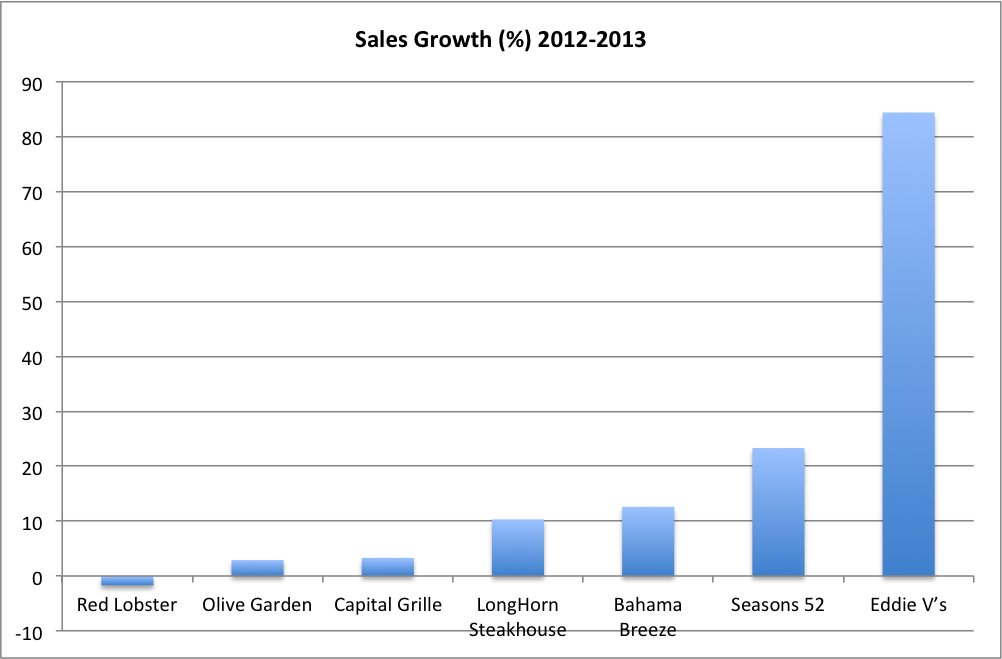With the sale of Red Lobster, Darden Restaurants said its remaining restaurant chains, including Olive Garden, LongHorn Steakhouse and a growing roster of upscale brands, could now focus on reeling in their “core customers.” Darden CEO Clarence Otis Jr. offered a clue as to who those core customers might be. Hint: they’re “more financially secure.”
“At Olive Garden,” he explained during a recent investor call, “we had 11% more visits last year, fiscal 2013, from guests with household income over $100,000 than we did five years earlier.” And that was small potatoes compared with LongHorn Steakhouse, which wrangled 50% growth out of the same income bracket.
“In contrast,” Otis said, “Red Lobster traffic from this income demographic was flat.”
Lodged squarely in the middle-income bracket, Red Lobster’s sales have trailed behind Dardene’s upscale brands, particularly Eddie V’s, a premium seafood restaurant where diners can sip on world-class wines and enjoy live jazz performances at the “V Lounge.” The columns bookending this chart tell a tale of two seafood chains.

Source: Darden 2013 Annual Report
It was the best of times, it was the worst of times for Darden’s 2013 income statement, and it’s a sign of the times that it seems to be luring upscale diners with promotions that are a little more understated than a never-ending pasta bowl. Olive Garden, for example, has garnished its dishes with more exotic (read: Italian) ingredients, including capers, kale and polenta.
It may be a discouraging, lopsided, sluggish economic recovery, but at least it came with capers.
More Must-Reads from TIME
- Why Biden Dropped Out
- Ukraine’s Plan to Survive Trump
- The Rise of a New Kind of Parenting Guru
- The Chaos and Commotion of the RNC in Photos
- Why We All Have a Stake in Twisters’ Success
- 8 Eating Habits That Actually Improve Your Sleep
- Welcome to the Noah Lyles Olympics
- Get Our Paris Olympics Newsletter in Your Inbox
Contact us at letters@time.com